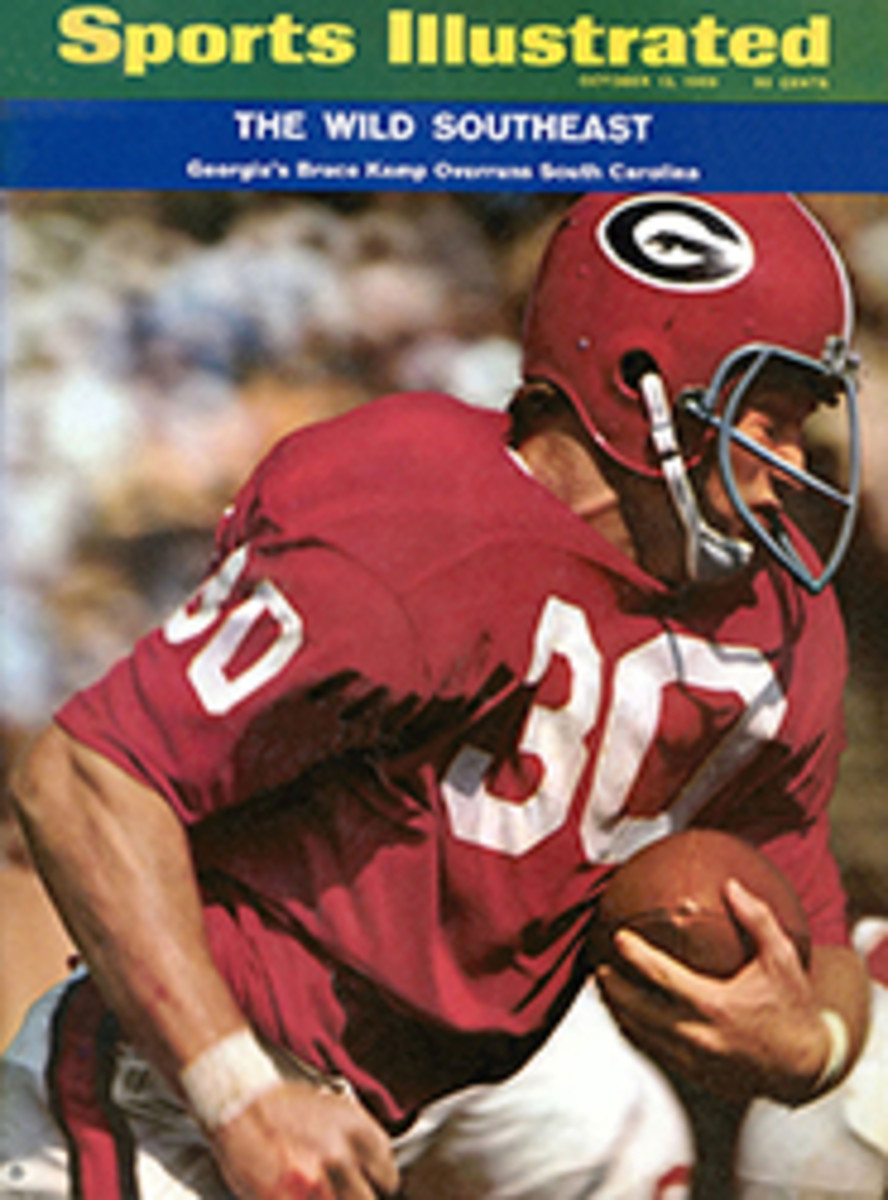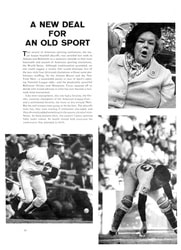
An urbane residence in central London is actually a shop for mountaineers
Edward Lear wrote his nonsense rhymes at No. 30 Seymour Street, London W. 1, just behind the Marble Arch—or Tyburn that was. Close by, at No. 54, a brass plate admits ROBERT LAWRIE LTD. (LATE OF BURNLEY), ALPINE EQUIPMENT SPECIALISTS! A subplate announces a complicated set of business hours and, were it not for these two quiet signs, there would be no indication whatever that the dignified London terrace house conceals a thriving mountaineering equipment shop run by the triumvirate of Mr. Lawrie and his wife Ursula with their Yorkshire-born secretary, Miss Elsie Lane.
The shopper rings the bell, and the door is opened to a hallway with a club-type letter rack holding picture-postcard views of mountains, snow, rocks and lakes. A room to the left of the hall is the shop itself, and even there, among the parkas, crampons, climbing ropes and stacks of boots, the quiet clubby atmosphere persists—or would were it not for the staccato bell ringing as climbers wander in to kit out for some far-off peak. Such constant interruption makes conversation difficult, yet the management trio and their assistants remain calm, courteous, cool and unruffled. Certainly more of a club than a shop, but business is business.
Robert Lawrie, 65, tall, beams benignly and talks with increasing enthusiasm about mountaineering in the soft, flattish tones of Lancashire where he was born and inherited his father's boot and shoe factory. A limp, he explains, comes from an automobile accident when he was on a holiday in France two years back—"French trees are just as hard as any other trees." The accident has temporarily put an end to climbing, but the company of mountaineers and customers seems to compensate.
As a schoolboy Lawrie "enjoyed wandering about in the hills" of the Lake District, traditional nursery for future climbers, and then, after he had gathered enough experience, to the Pyrenees and Alps. In those days the kind of boots worn, heavy shepherd's boots, proved uncomfortable and inadequate, so Lawrie went ahead and made some for himself and his companions. Despite the "accidental sort of start" Lawrie emphasizes that the boot design was far from accidental. Word of the new boot and its excellent qualities quickly came to the notice of the 1933 Everest expedition led by Hugh Ruttledge. In his subsequent account of the expedition, Ruttledge wrote, "Few of the men who have experienced frostbite on their toes or on the soles of their feet" would not appreciate the importance of a well-insulated boot. The order, for some 20 pairs for the members and a further 50 for the Sherpa porters, was sufficient to establish Lawrie, not only as a first-class maker of high-altitude boots, but in his comfortable London house. "Burnley," he says nostalgically, "was not well-placed for this kind of thing."
There were further meetings, further requests and business flourished. One reminder of those days is a pair of size 15 boots made for Dr Raymond Greene, a Harley Street physician and 6'6" brother of Graham Greene, who took part in the '33 Everest climb. The boots are beauties, works of art, and Lawrie points out how the nails were all filed by hand, both to give a grip and to save a vital few grams in weight. But he is careful to add that boots of that sort are not made to last. They are made to be worn immediately and for one expedition only—"They won't fit forever"—he warns.
As for price of the boots, Lawrie allows a 10% discount for bulk buying on handmade boots costing between £17 and £30 ($40 to $75), but he also sells them "off the peg" (ready-made) for between £10 and £20 ($24 and $48). Even though boots are the basis of the business, all the paraphernalia of mountaineering is also for sale in the shop and, just to help out, the Lawries provide maps of most of the popular climbing areas and free advice. In fact, advice is an important part of every transaction, and they keep closely in touch with the rarefied world of mountaineering.
During World War II, Lawrie shut up shop in London and moved to an army camp in the North where he made boots for the parade ground. It was there at Newark, Nottinghamshire that a strange party of three captains and two majors led by a sergeant major in the Norwegian army turned up to be fitted out with specially-made boots designed for skiing and walking. A stipulation in the manufacture was that the boots must show no signs by which their origin could be traced, and this meant using materials—even nails—which could not be identified. Lawrie himself was sworn to secrecy but he often wondered what became of the Norwegian group and their sergeant major.
It was not until after the war had ended that he learned the party who needed the special boots had destroyed the German heavy-water plant in central Norway, putting an end to plans for a Nazi atomic bomb. The sergeant major, now promoted officer, turned up at Newark with a thank-you letter for Lawrie from the Norwegian government. This letter, together with numerous wood carvings, flags and ice axes, forms the Lawries' own private collection of memories of a full and happy life in the world of mountaineering.

